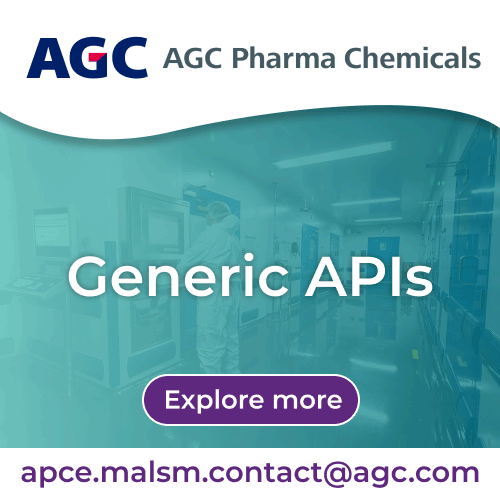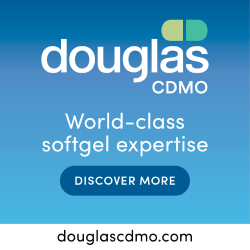Overview of contract packaging & contract manufacturing services for emulsion dosage forms including oil in water emulsions & water in oil emulsions.
Q1. What are emulsions and what are their benefits?
Emulsions are heterogeneous and biphasic, thermodynamically unstable systems containing two immiscible fluids (for e.g. fat and water) stabilized by an emulsifying agent. The dispersed phase of an emulsion formulation is composed of small globules of a liquid distributed throughout a vehicle in which it is immiscible.
These drug delivery systems usually contain an emulsifier or emulsifying agent, a compound or substance that acts as a stabilizer for emulsions, preventing liquids that don't ordinarily mix from separating.
Surface-active ingredients or surfactants, which adsorb at the oil–water interface during emulsion preparation and protect the newly formed droplets against immediate recoalescence, are used as emulsifying agents. An emulsifier thus keeps immiscible compounds from separating by increasing the kinetic stability of a mixture.
In the absence of emulsifiers, emulsion dosage forms become unstable and eventually separate into two distinct liquid layers. While an emulsion is a mixture of oil and water, an emulsifier is a specific molecule able to bind to oil and water so that they can bind together, consequently stabilizing the emulsion. E.g. Lecithin is an emulsifier which binds emulsions of water and oil.
Emulsions of two liquids may be naturally formed, but more often mechanisms like agitation are used, provided that the two fluids have no kind of mutual solubility. Emulsion formulations are not popular for oral ingestion, however, they are increasingly used in the preparation of parenteral (complex injectable formulations) & topical dosage forms such as ointments, creams, lotions, etc.
Emulsions are used in a wide variety of industrial and pharmaceutical products including ocular, topical, mucosal, intravenous, intramuscular, and oral products. Emulsions are also used as precursors to prepare polymer microparticles, solid nanoparticle lipid emulsions, inorganic nanoparticles and oil filled microcapsules and have been developed as precursors to magnetic particles for imaging, diagnostics and drug delivery.
Some Benefits of Emulsion Dosage Forms:
- Taste masking of unpleasant tastes by adding sweetening and flavoring agents to the external phase.
- Improved bioavailability
- Increased patient compliance; emulsions can be administered to people who have difficulty swallowing solid finished dosage forms.
- Sustained release drug delivery
- Nutritional supplements
- Administration of oily formulations via oil in water emulsion drug delivery systems
- External use preparations (creams, lotions, aerosols, etc.) & parenteral nutrition
- Gastrointestinal problems and first pass metabolic effect are avoided
- Intramuscular injections of water-soluble drugs and vaccines for slow release
Q2. What are the different types of emulsions?
Based on the dispersed phase emulsions are classified into the following types:
Oil in water emulsion (O/W)
Water in oil emulsion (W/O)
Oil-in-water-in-oil (O/W/O) emulsion
Water-in-oil-in-water (W/OW) emulsion
- Oil in Water Emulsion (O/W)
In this type of emulsion, the oil is the dispersed phase and water is the dispersion medium. The best example of an o/w emulsion is milk. In milk, the fat globules (which act as the dispersed phase) are suspended in water (which acts as the dispersion medium).
- Water in Oil Emulsion (W/O)
Water in oil emulsions are drug delivery systems in which water forms the dispersed phase, and the oil acts as the dispersion medium. These emulsions are also called oil emulsions. Butter and cold cream are typical examples of water in oil emulsions.
- Multiple Emulsions (e.g. O/W/O or W/O/W)
Multiple emulsions are complex systems which consist of both w/o and o/w emulsions simultaneously and require two distinct surfactants to stabilize the system. They are soft materials formed by dispersed droplets (called outer droplets) that contain in turn smaller droplets inside (called inner droplets).
In multiple emulsions, the internal and external phases are alike and an intermediate phase separates the two like phases. The intermediate phase is immiscible with the two like phases. For example, in water-in-oil-in-water (w/o/w) multiple emulsions, a w/o emulsion is dispersed in a water-continuous phase.
Based on size of liquid droplets:
- Macroemulsions
Macroemulsions are kinetically stabilized mixtures of at least two immiscible liquids where one of the liquids has droplets with a diameter greater than 0.1 mm. Macroemulsions scatter light effectively and therefore appear milky, because their droplets are greater than a wavelength of light.
- Microemulsions
Microemulsions are clear, thermodynamically stable, isotropic liquid mixtures of oil, water and surfactant, frequently in combination with a cosurfactant. A stable emulsion is clear because the individual droplets of the dispersed phase are less than 100 nanometers in diameter.
- Nanoemulsions
Nanoemulsions are nano-sized emulsions, which are manufactured for improving the delivery of active pharmaceutical ingredients (APIs). These are the thermodynamically stable isotropic systems in which two immiscible liquids are mixed to form a single phase by means of an emulsifying agent, i.e., surfactant and cosurfactant. Nanoemulsions or microemulsions can be lipid emulsions.
Pharmaceutical emulsion types:
Oral Emulsions
- Oil in Water Emulsions (liquid)
External Emulsions
- Lotions (liquid)
- Creams (semi-solid)
- Liniments
Parenteral Emulsions (Complex injectable formulations)
- O/W (parenteral nutrition)
- O/W or W/O (intramuscular)
Q3. What are the different methods of manufacturing emulsions?
Emulsions may be prepared by several methods, depending upon the nature of the components and the equipment. On a small scale, as in the laboratory or pharmacy, emulsions may be prepared using a dry wedgwood or porcelain mortar and pestle or a mechanical blender or mixer. On a large scale, large mixing tanks may be used to form the emulsion through the action of a high-speed impeller.
Small Scale Emulsification Methods:
- Continental (Dry Gum Method)
In this method the oil is first triturated with gum with a little amount of water to form the primary emulsion. The trituration is continued till a characteristic ‘clicking’ sound is heard and a thick white cream is formed. Once the primary emulsion is formed, the remaining quantity of water is slowly added to form the final emulsion.
- English (Wet Gum Method)
In this method first gum and water are triturated together to form a mucilage. The required quantity of oil is then added gradually in small proportions with thorough trituration to form the primary emulsion. Once the primary emulsion has been formed the remaining quantity of water is added to make the final emulsion.
- Bottle (Forbes Bottle Method)
This method may be used to prepare emulsions of volatile oils, or oleaginous substances of very low viscosities. It is not suitable for very viscous oils since they cannot be sufficiently agitated in a bottle. The bottle method is a variation of the dry gum method.
One part powdered acacia (or other gum) is placed in a dry bottle and four parts oil are added. The bottle is capped and thoroughly shaken. To this, the required volume of water is added all at once, and the mixture is shaken thoroughly until the primary emulsion forms.
Large Scale Emulsification Method:
Large scale emulsification is employed to manufacture emulsions in bulk quantities. Mechanical equipment such as mechanical stirrers, propeller mixers, colloid mills, and ultra-sonifiers are used to manufacture emulsions as they facilitate agitation. The above mentioned technologies agitate the large quantities of immiscible liquids by supplying the systems with energy, ultimately creating the desired emulsion formulations.
Q4. How are liquid stick packs beneficial in packaging emulsions?
Stick packs are the ideal primary packaging solution for a wide range of powder, granule, liquid, gel and other specialist dosage forms. They provide a convenient, portable unit-dose solution for prescription and over-the-counter (OTC) medicines, as well as nutritional supplements.
Stick packs are a type of flexible pouch suitable for food, drink, and medical packaging. Generally, they take the form of a small pouch, packet, or tube made from a flexible film, so that they are easily opened, portable, and can be consumed virtually anywhere.
They require 10 % – 40 % less packaging material than equivalent rectangular or square pouches and are typically prepared for direct consumption to provide the complete recommended dose in a single serving. The above given qualities make stick packs ideal for geriatric and pediatric formulations, as well as other finished dosage forms.
Liquid stick-packs for pharmaceutical formulations such as emulsion dosage forms appeal to consumers with modern and active lifestyles. Today an active, mobile lifestyle is the norm for most people, making the need for portable, single unit, premeasured primary packaging solutions such as stick packs and liquid sachets (practical single-dose sachets) a must.
There are various contract packagers with multi-lane packaging facilities offering pharmaceutical contract packaging for emulsions and other liquid dosage forms in stick packs. Stickpack contract packaging service providers having multi-lane packaging equipment offer a wide variety of powder and liquid stick packaging of various sizes and configurations for emulsions.
Some other advantages offered by liquid stick packaging include:
- Versatile options for formulating high doses of active pharmaceutical ingredients (APIs), including different active pharmaceutical ingredient (API) combinations, modified release mechanisms, taste-masking technologies and mouth-feel improvements
- Extensive range of dimensions and formulation options to support one's custom design requirements
- Convenient, slim, compact and easy usage
- No spillage
- Accurate dosing
- No wastage
- Eco-friendliness
Q5. Who are the leading contract manufacturers offering emulsion formulations?
There are numerous CDMOs and CMOs having pharmaceutical contract manufacturing capabilities for emulsion formulations and packaging capabilities for stickpack contract packaging (powder and liquid stick packaging) of emulsions.
Unither Pharmaceuticals
Unither provides contract development and pharmaceutical contract manufacturing for emulsions as well as powder & liquid stick packaging services for liquid formulations, solid and semisolid dosage forms. Over the past 25 years, they have acquired a deep expertise in compounding & filling solutions, suspensions, emulsions & gels.
They provide contract manufacturing for emulsions along with other liquid and semi-solid dosage forms.They also offer stickpack contract packaging as contract packaging solutions including Blow-Fill-Seal (BFS), liquid sachets (practical single-dose sachet), Unistick® liquid stickpacks, Unistick® powder stick packs, etc.
Softigel Procaps
Softigel is recognized internationally as a trustworthy supplier and business partner for development and GMP-compliant contract manufacturing and packaging for different pharmaceutical finished dosage forms. They are specialized in Softgel technologies and offer access to other delivery systems such as emulsions, sterile liquids, complex injectable formulations, prefilled syringes, etc.
Softigel offers contract manufacturing for emulsions. They have pharmaceutical contract manufacturing capabilities for softgel capsules and other drug delivery forms such as syrups, suspensions & drops.
Pharmatis
Pharmatis makes PHARMASTICK® stick packs with multi-lane packaging equipment and is currently the European contract packaging leader for packaging drinkable emulsions in liquid stickpacks and liquid sachets (practical single dose sachets). They offer contract manufacturing for emulsions along with powder & liquid stick packaging.
Emulsions are available in liquid stickpacks, mono or double pocket liquid sachets, bottles, etc. Along with packaging, Pharmatis also offers GMP-compliant contract manufacturing services for suspensions, emulsions, gels and other liquid formulations.
Innopharmax
Innopharmax undertakes contract formulation development of pharmaceuticals and has established partnerships with Contract Research Organizations (CROs) and continues to seek out new partners in various research and development areas in order to provide a full package for the clients who need a total solution for their product development.
They have GMP-compliant contract manufacturing capabilities for solid and liquid dosage forms, They also offer contract manufacturing for emulsions including microemulsions. Their technology platforms include a Self-Microemulsifying Drug Delivery System Technology called OralPas®.
All Suppliers

















 End-to-end drug development, specializing in high-potency softgels and liquids, providing global partners with a competitive advantage.
End-to-end drug development, specializing in high-potency softgels and liquids, providing global partners with a competitive advantage.





